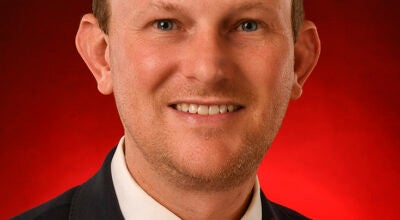A matter of the mind and heart
Published 11:00 pm Friday, May 24, 2013
The first American to die in the American Revolution — the first to die for a nation that would be dedicated to the freedom of humanity — was Crispus Attucks. He died on March 5, 1770, in the Boston Massacre. Twenty years earlier, the Boston Gazette and Weekly Journal had described him as “about 27 Years of Age, named Crispus, 6 feet 2 inches high.”
Future U.S. President John Adams, defending the British soldiers in court against charges of murder, said Attucks lunged at a British soldier, “and with one hand took hold of a bayonet, and with the other knocked the man down.” Attucks was African-American.
George Washington needed Haym Solomon. Working with Robert Morris, the “financier of the Revolution,” Solomon raised $600,000 for the Continental Army, a King’s fortune — so to speak. When Washington needed $20,000 to finance the Battle for Yorktown, Morris had to tell him that Congress’s purse was empty. “Send for Haym Solomon,” Washington replied. Solomon raised the $20,000, and Washington fought the Revolution’s last battle and won. Solomon was Jewish-American.
At 18, Lawrence Taliaferro of Virginia volunteered to fight in the War of 1812. Rising to the rank of lieutenant, he survived the Siege of Fort Erie. He remained in the Army at frontier posts until 1819, when President Monroe made him an Indian agent. Taliaferro won the respect and admiration of Indians for his “integrity and protection of the tribes against corruption.” Taliaferro was Italian-American.
George Leisenring, a 26-year-old from Philadelphia, was mortally wounded as his brigade passed through Baltimore, a hotbed of confederate sentiment. On April 19, 1861 — seven days after the Civil War’s opening shots at Fort Sumter — he was en route with troops to protect Washington, D.C. He was overtaken by rioters on the 86th anniversary of the American Revolution’s battles of Lexington and Concord. Leisenring was German-American.
Brig. Gen. Arthur MacArthur likely disagreed when Secretary of State John Hay called the Spanish-American War “a splendid little war.” MacArthur’s unit sustained significant casualties when he finished what Admiral Dewey had begun and captured the Philippine capital of Manila. The father of Word War II Gen. Douglas MacArthur, Arthur MacArthur was Scottish-American.
Robert Taylor was one of 19 men considered essential to ending World War I. Toward the end of the war, the German Army had tapped American military communications and were listening in to messages of troop movements. Taylor, who spoke Choctaw, volunteered as a “code talker” to transmit military secrets by radio and by telephone. The Germans, prepared for European languages, were baffled by the Native American language.
Some say the tide of battle turned within 24 hours of the employment of the code talkers. The 19 code talkers were not American citizens. They could not vote until 1924. Taylor, like all of them, was Choctaw-American.
Daniel Inouye fought in World War II. His regiment, the most decorated of the war, was awarded eight presidential citations and 21 Medals of Honor.
Inouye volunteered at 17. He witnessed the attack on Pearl Harbor. A Red Cross-trained medical aide, Inouye was among the first to treat the wounded. Two weeks before the end of the war, while leading an assault on enemy positions, Inouye was shot in the midsection and the leg, and had his right arm all but severed.
Army doctors ultimately amputated the arm, ending Inouye’s dream of being a surgeon. He took up law and became a United State senator. Inouye was Japanese-American.
Emil Kapaun became a Roman Catholic priest and served as a chaplain in the “Forgotten War,” the Korean War. Taken prisoner, Kapaun ministered to captured troops by stealing food and sneaking it to them under cover of night. A survivor told of being wounded and looking up to see an enemy soldier pointing a rifle at him. Father Kapaun strode up, pushed the soldier’s muzzle away, picked up the wounded American and carried him to safety. Father Kapaun died in the camp. He was Czech-American.
Leslie H. Sabo, Jr. died in Cambodia at age 22. Surrounded, Sabo threw himself on a wounded soldier, taking the brunt of a grenade blast. He provided covering fire, taking multiple wounds, until he fell. President Obama awarded Sabo a posthumous Medal of Honor in 2010, 42 years later. Sabo was Hungarian-American.
The two Iraq Wars and Afghanistan War are too recent to pick out a representative soldier. We have thousands of Americans who have given “the last full measure of devotion” in these wars, and many who yet struggle with the wounds these conflicts have left. People walk in freedom in Iraq, and are moving toward freedom in Afghanistan because of their sacrifices. Which one of these soldiers is a “typical” American? They all are. This Memorial Day, let’s pause and give thanks for each of them, living and deceased. Let’s recall FDR’s words: “The principle on which this country was founded and by which it has always been governed is that Americanism is a matter of the mind and heart; Americanism is not, and never was, a matter of race or ancestry.”
(Donna Brazile is a senior Democratic strategist, a political commentator and contributor to CNN and ABC News.)


